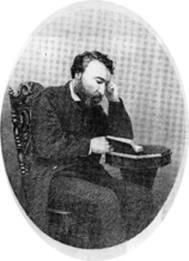Annotation:Knocknagow Jig (1): Difference between revisions
No edit summary |
m Text replacement - "garamond, serif" to "sans-serif" |
||
| (2 intermediate revisions by one other user not shown) | |||
| Line 1: | Line 1: | ||
'''Back to [[{{BASEPAGENAME}}]]''' | '''Back to [[{{BASEPAGENAME}}]]''' | ||
---- | ---- | ||
<p><font face=" | <p><font face="sans-serif" size="4"> | ||
'''KNOCKNAGOW (JIG) [1]''' ("Cnoc-Na-Gaba" or "Cnoc na nGaibhne"). Irish, Double Jig. A Dorian ('A', 'B', and 'C' parts) & A Major ('D' part). Standard tuning (fiddle). AABB (Breathnach): AABBCCDD (Carlin, O'Neill). Breathnach prints "Knocknagow" as two separate tunes, versus O'Neill's four part tune. The modern version, probably popularized by accordion player Joe Burke, differs from O'Neill toward a more dorian mode setting. Knocknagow was the name of an imaginary place by County Tipperary author Charles Kickham [http://en.wikipedia.org/wiki/Charles_Kickham] (1826-82), | '''KNOCKNAGOW (JIG) [1]''' ("Cnoc-Na-Gaba" or "Cnoc na nGaibhne"). Irish, Double Jig. A Dorian ('A', 'B', and 'C' parts) & A Major ('D' part). Standard tuning (fiddle). AABB (Breathnach): AABBCCDD (Carlin, O'Neill). Breathnach prints "Knocknagow" as two separate tunes, versus O'Neill's four part tune. The modern version, probably popularized by accordion player Joe Burke, differs from O'Neill toward a more dorian mode setting. Knocknagow was the name of an imaginary place by County Tipperary author Charles Kickham [http://en.wikipedia.org/wiki/Charles_Kickham] (1826-82), an Irish Nationalist and Fenian. "Knocknagow,” or “The Homes of Tipperary,” was thought by O’Sullivan to be one of the finest tales of peasant life ever written, and Yeats described it as "The most honest of Irish novels." | ||
[[File:kickham.jpg|200px|thumb|left|Charles Kickham]] | |||
<br> | <br> | ||
<br> | <br> | ||
</font></p> | </font></p> | ||
<p><font face=" | <p><font face="sans-serif" size="4"> | ||
''Source for notated version'': accordion player Joe Burke (Ireland) [Breathnach]; Donegal fiddler Tommy Peoples [Bulmer & Sharpley]. | ''Source for notated version'': accordion player Joe Burke (Ireland) [Breathnach]; Donegal fiddler Tommy Peoples [Bulmer & Sharpley]. | ||
<br> | <br> | ||
<br> | <br> | ||
</font></p> | </font></p> | ||
<p><font face=" | <p><font face="sans-serif" size="4"> | ||
''Printed sources'': Breathnach ('''CRE III'''), 1985; No. 29, p. 14. Bulmer & Sharpley ('''Music from Ireland'''), 1976, vol. 4, No. 44. Carlin ('''Master Collection'''), 1984; No. 219, p. 128 (appears as "Baile Na Finne"). O'Neill (Krassen), 1976; p. 76. O'Neill ('''Music of Ireland: 1850 Melodies'''), 1903; No. 1113, p. 210. | ''Printed sources'': Breathnach ('''CRE III'''), 1985; No. 29, p. 14. Bulmer & Sharpley ('''Music from Ireland'''), 1976, vol. 4, No. 44. Carlin ('''Master Collection'''), 1984; No. 219, p. 128 (appears as "Baile Na Finne"). O'Neill (Krassen), 1976; p. 76. O'Neill ('''Music of Ireland: 1850 Melodies'''), 1903; No. 1113, p. 210. | ||
<br> | <br> | ||
<br> | <br> | ||
</font></p> | </font></p> | ||
<p><font face=" | <p><font face="sans-serif" size="4"> | ||
''Recorded sources'': <font color=teal>Arhoolie C-334, Seamus Connolly - "Masters of the Folk Violin" (1989). Green Linnet SIF 1139, "Eileen Ivers" (1994). Outlet Records SOLP 1015, Joe Burke - "Galway's Own" (1971). Michael McGoldrick - "Morning Rory."</font> | ''Recorded sources'': <font color=teal>Arhoolie C-334, Seamus Connolly - "Masters of the Folk Violin" (1989). Green Linnet SIF 1139, "Eileen Ivers" (1994). Outlet Records SOLP 1015, Joe Burke - "Galway's Own" (1971). Michael McGoldrick - "Morning Rory."</font> | ||
<br> | <br> | ||
<br> | <br> | ||
</font></p> | </font></p> | ||
<p><font face=" | <p><font face="sans-serif" size="4"> | ||
See also listing at:<br> | See also listing at:<br> | ||
Alan Ng's Irishtune.info [http://www.irishtune.info/tune/1063/]<br> | Alan Ng's Irishtune.info [http://www.irishtune.info/tune/1063/]<br> | ||
Latest revision as of 14:07, 6 May 2019
Back to Knocknagow Jig (1)
KNOCKNAGOW (JIG) [1] ("Cnoc-Na-Gaba" or "Cnoc na nGaibhne"). Irish, Double Jig. A Dorian ('A', 'B', and 'C' parts) & A Major ('D' part). Standard tuning (fiddle). AABB (Breathnach): AABBCCDD (Carlin, O'Neill). Breathnach prints "Knocknagow" as two separate tunes, versus O'Neill's four part tune. The modern version, probably popularized by accordion player Joe Burke, differs from O'Neill toward a more dorian mode setting. Knocknagow was the name of an imaginary place by County Tipperary author Charles Kickham [1] (1826-82), an Irish Nationalist and Fenian. "Knocknagow,” or “The Homes of Tipperary,” was thought by O’Sullivan to be one of the finest tales of peasant life ever written, and Yeats described it as "The most honest of Irish novels."

Source for notated version: accordion player Joe Burke (Ireland) [Breathnach]; Donegal fiddler Tommy Peoples [Bulmer & Sharpley].
Printed sources: Breathnach (CRE III), 1985; No. 29, p. 14. Bulmer & Sharpley (Music from Ireland), 1976, vol. 4, No. 44. Carlin (Master Collection), 1984; No. 219, p. 128 (appears as "Baile Na Finne"). O'Neill (Krassen), 1976; p. 76. O'Neill (Music of Ireland: 1850 Melodies), 1903; No. 1113, p. 210.
Recorded sources: Arhoolie C-334, Seamus Connolly - "Masters of the Folk Violin" (1989). Green Linnet SIF 1139, "Eileen Ivers" (1994). Outlet Records SOLP 1015, Joe Burke - "Galway's Own" (1971). Michael McGoldrick - "Morning Rory."
See also listing at:
Alan Ng's Irishtune.info [2]
Back to Knocknagow Jig (1)
